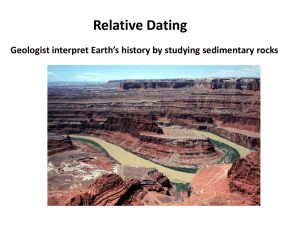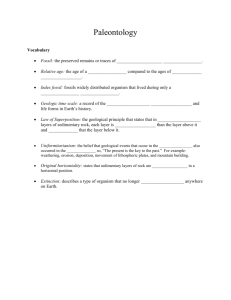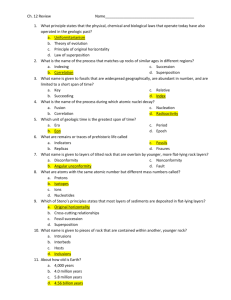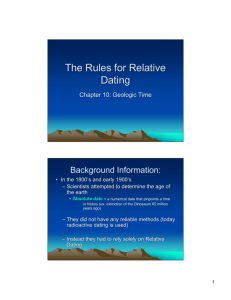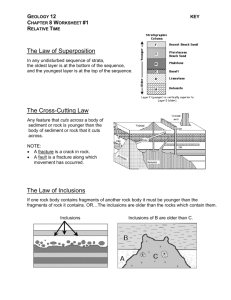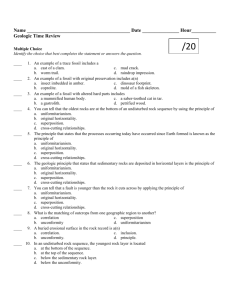Concept 1 Sample
advertisement
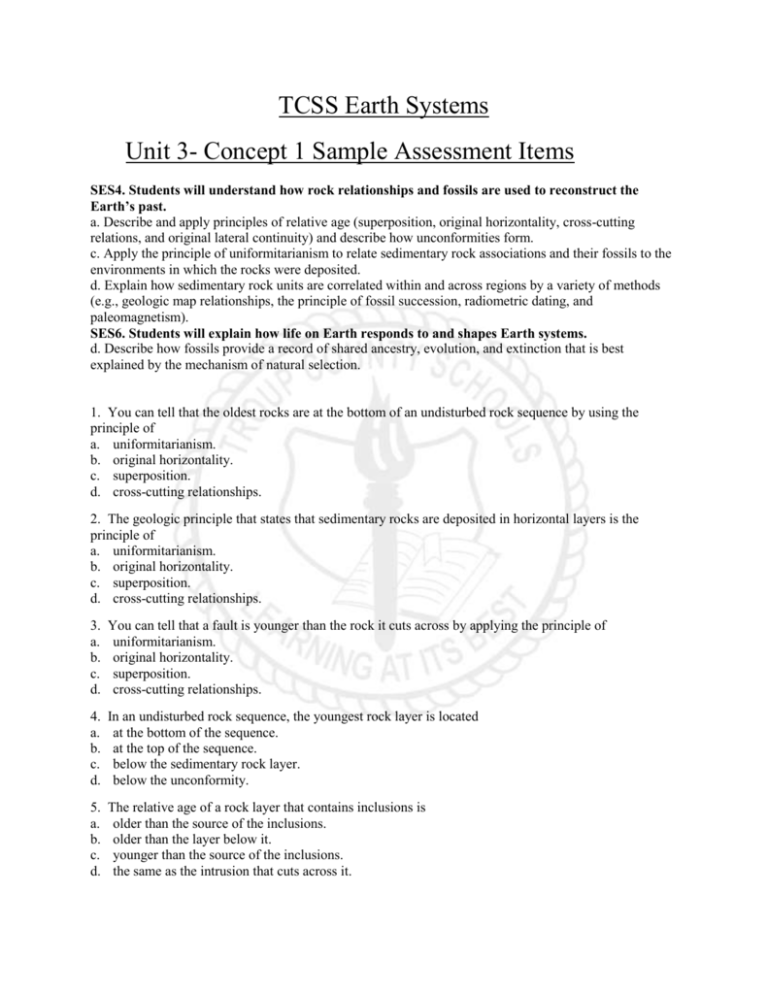
TCSS Earth Systems Unit 3- Concept 1 Sample Assessment Items SES4. Students will understand how rock relationships and fossils are used to reconstruct the Earth’s past. a. Describe and apply principles of relative age (superposition, original horizontality, cross-cutting relations, and original lateral continuity) and describe how unconformities form. c. Apply the principle of uniformitarianism to relate sedimentary rock associations and their fossils to the environments in which the rocks were deposited. d. Explain how sedimentary rock units are correlated within and across regions by a variety of methods (e.g., geologic map relationships, the principle of fossil succession, radiometric dating, and paleomagnetism). SES6. Students will explain how life on Earth responds to and shapes Earth systems. d. Describe how fossils provide a record of shared ancestry, evolution, and extinction that is best explained by the mechanism of natural selection. 1. You can tell that the oldest rocks are at the bottom of an undisturbed rock sequence by using the principle of a. uniformitarianism. b. original horizontality. c. superposition. d. cross-cutting relationships. 2. The geologic principle that states that sedimentary rocks are deposited in horizontal layers is the principle of a. uniformitarianism. b. original horizontality. c. superposition. d. cross-cutting relationships. 3. a. b. c. d. You can tell that a fault is younger than the rock it cuts across by applying the principle of uniformitarianism. original horizontality. superposition. cross-cutting relationships. 4. a. b. c. d. In an undisturbed rock sequence, the youngest rock layer is located at the bottom of the sequence. at the top of the sequence. below the sedimentary rock layer. below the unconformity. 5. a. b. c. d. The relative age of a rock layer that contains inclusions is older than the source of the inclusions. older than the layer below it. younger than the source of the inclusions. the same as the intrusion that cuts across it.
